Photographs taken 2017
Looe Island (or St George's Island as it has also been known) is now owned by the Cornwall Wildlife Trust, after having been donated to their care in 2004 after the death of Babs Atkins, the sister of Evelyn Atkins who passed away in 1997, and who both previously owned the island. Their story is told in the two books written by Evelyn, "We bought an Island" and "Tales from our Cornish Island". The whole island is now a CWT Nature Reserve, and on the 22nd of July 2017 we took a trip to Looe Island, and a guided walk in the competant care of Wardens Jon Ross and Claire Lewis.
The Island
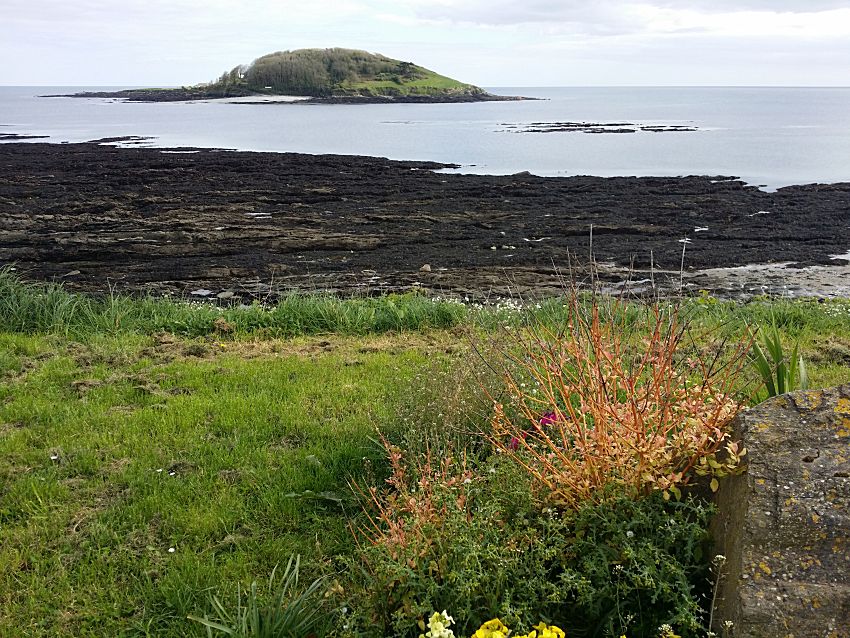
The view of Looe Island (St George's Island) from above the beach
and rock pools of West Looe
Trips to the island can be made by authorised boat from Buller's Quay near the lifeboat station in Looe, but need to be booked on the day at the quay, or for a Cornwall Wildlife Trust guided walk, see the CWT's own website for Guided Walks. You will have two and a half to three hours to explore the island, dependent on times and tides. The experience of a visit will be well worth leaving the mainland for it!
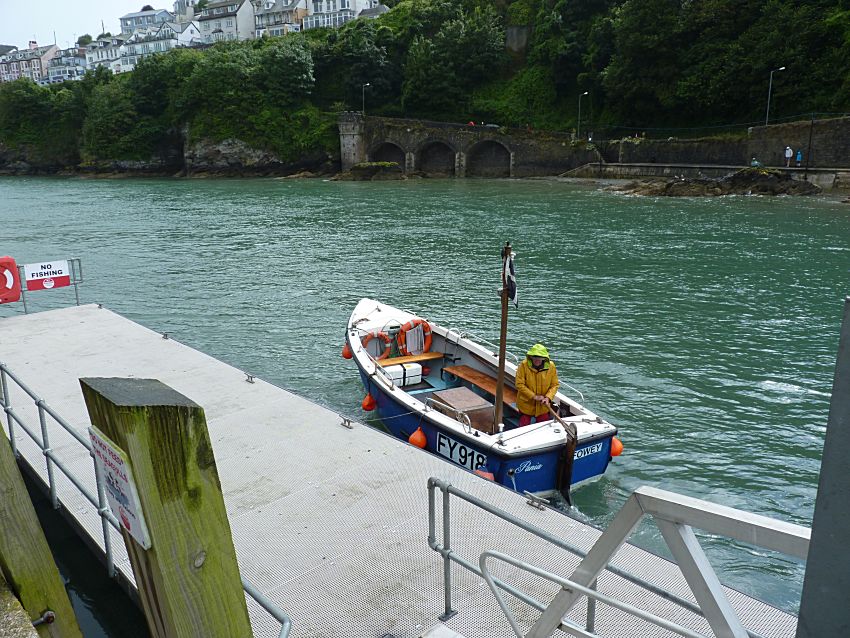
The ferry to the Island, on a raining but bright day
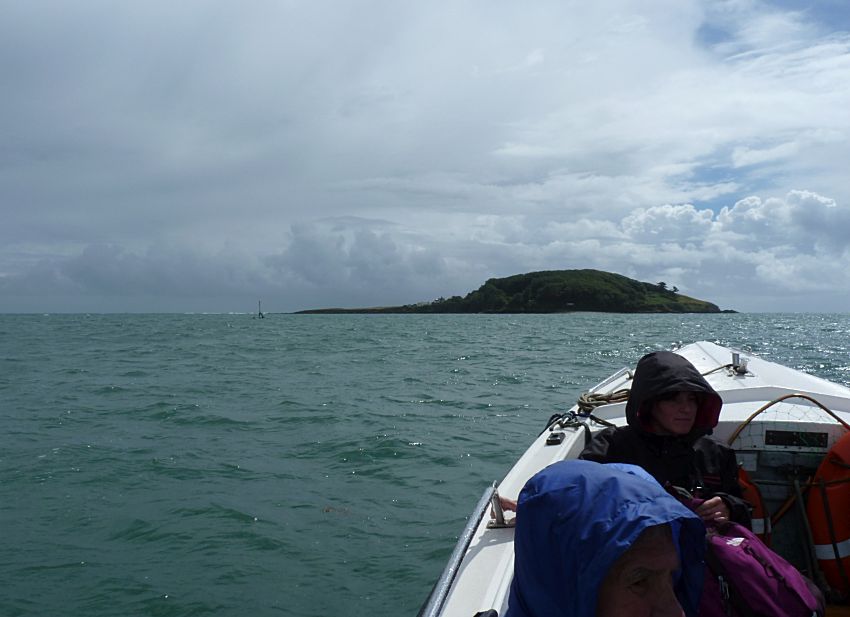
Hoods up, a slight rolling trip across, and the day brightens slowly
to sunshine!
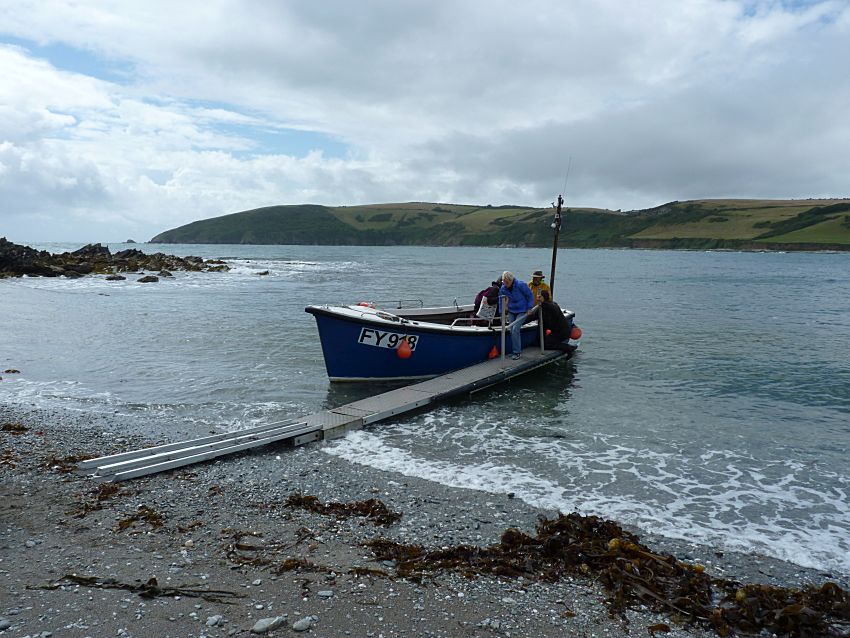
Beach landing
Landing on the island will be at the main beach via a small landing stage. A short walk up onto the island and a welcome in the Old Tractor Shed to introduce you to the Island, and what the nature reserve has to offer. A map leaflet is available to guide you, and if you are also on a pre-arranged guided walk, your tour will also start from here.
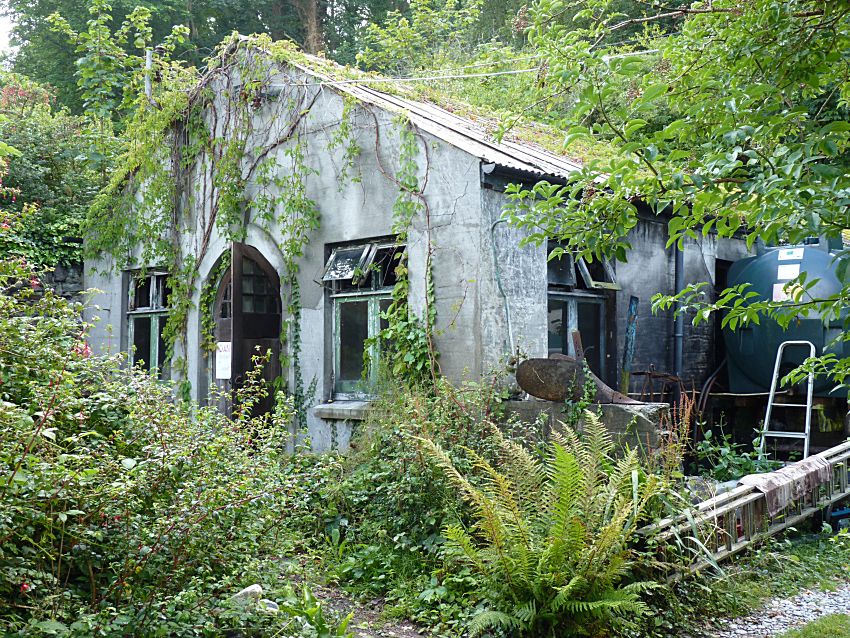
Old workshop and Generator Room
Looe Island is one of the few Cornish islands that are actually inhabited, being numbered among St Michael's Mount, "The Island" (or Towan Island) in Newquay (stretching a point!), and of course the five inhabited islands in the Isles of Scilly (St Mary's, Trseco, Bryher, St Agnes, and St Martin's). Godrevy Island (at the northern end of St Ives Bay) used to be inhabited (the lighthouse), but is no longer. Since the Atkins sisters passed away, the island is inhabited, all year round, by Wildlife Trust Wardens.
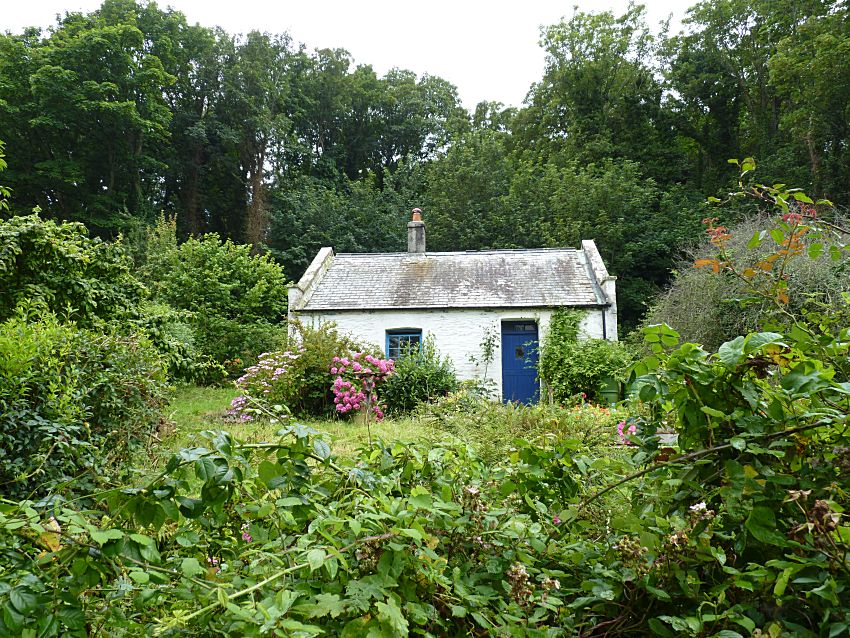
Smuggler's Cottage (now privately rented?)
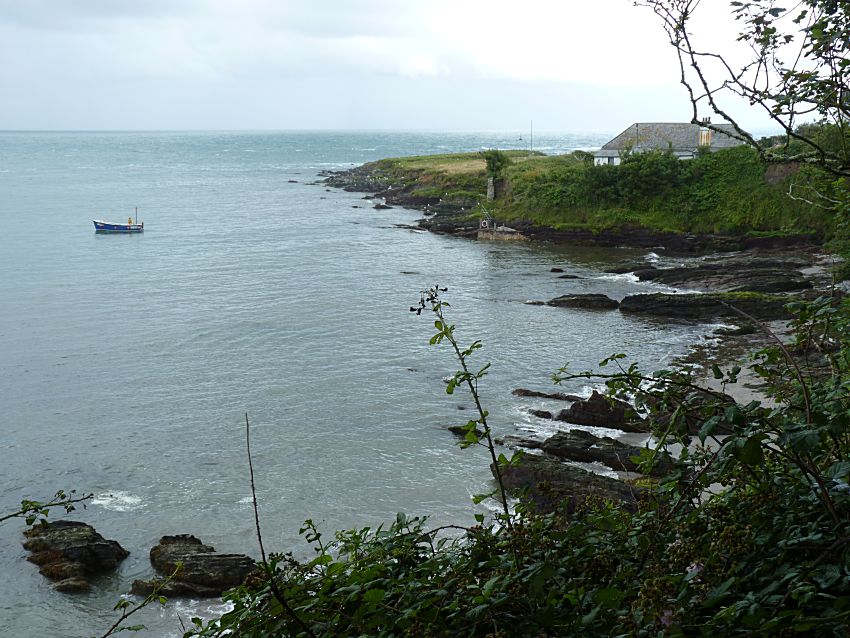
View from near Smuggler's Cottage across towards Jetty Cottage (and
the jetty)
Jetty Cottage is occupied by the CWT Wardens and acts as a visitor centre for talks and education activities. Both Jetty Cottage and Smuggler's Cottage were built in the 18th century, and will have seen a colourful history, including a prolific smuggling trade. There are caves to the west of the island that were used for concealing many of the goods between supplier and consumer!
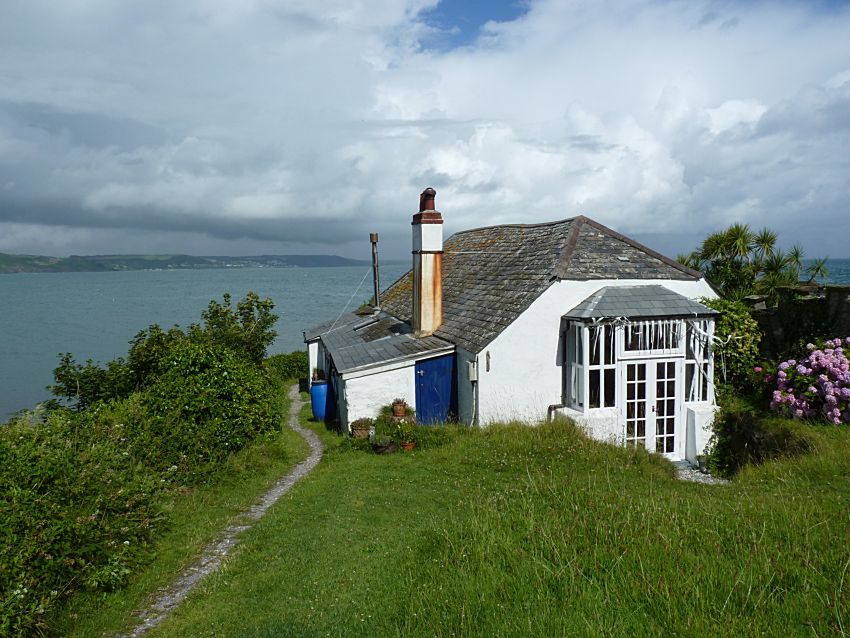
Jetty Cottage
Island House was the home of Babs and Evelyn Atkins, but was originally built during the 19th century as a customs house to bring smuggling activities to a close. The house is now privately rented(?).
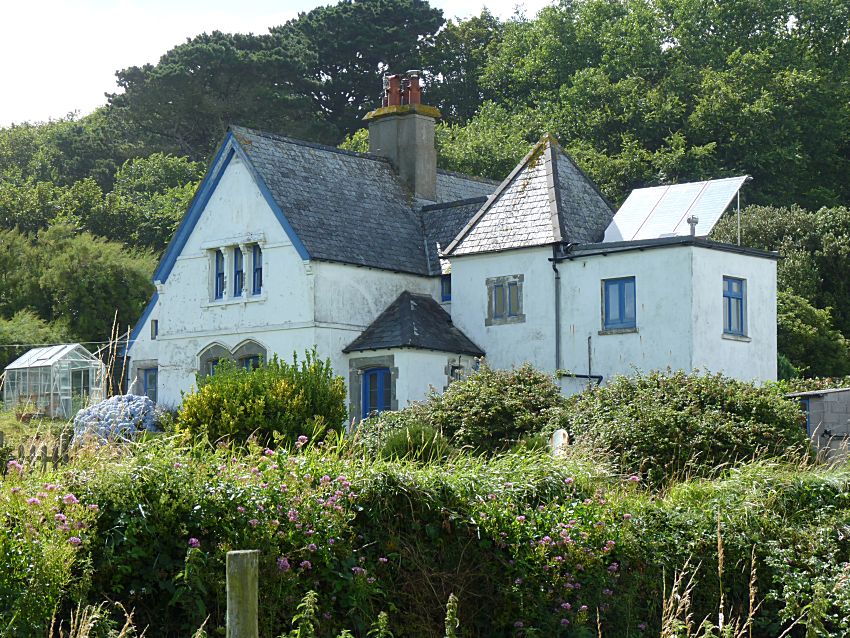
Island House
Island Wildlife
As a nature reserve, there are a number of resident animals on the island, including the odd goat and Hebridean sheep. The were at one time a good number of rabbits, but these were wiped out by myxomatosis. Rats were also once a very significant problem, cleared at one time by the good people of Looe, after having over-run the island from a shipwrecked ship. According to Wilkie Collins...
"All the available inhabitants of the town were called to join in a great hunt. The rats were caught by every conceivable artifice; and, once taken, were instantly and ferociously smothered in onions; the corpses were then decently laid out on clean china dishes, and straightway eaten with vindictive relish by the people of Looe. Never was any invention for destroying rats so complete and so successful as this! Every man, woman, and child, who could eat, could swear to the extirpation of all the rats they had eaten. The local returns of dead rats were not made by the bills of mortality, but by the bills of fare: it was getting rid of a nuisance by the unheard-of process of stomaching a nuisance! ...Swift and sure was the destruction that now overwhelmed them - everybody that wanted a dinner had a strong personal interest in hunting them down to the very last. In a short space of time the island was cleared of the usurpers. Cheeses remained entire: ricks rose uninjured. And this is the true story of how the people of Looe got rid of the rats!"
Rats are a persistant lot, and were, once again, finally eradicated in 2006, which so far has seemed to be completely successful. Not all wildlife met the same end of course, and the island is now home to a variety of seabirds and wild flowers, with the ground nesting birds now protected from having their eggs destroyed by the four-legged critters. The island is home to the largest breeding colony of Great Black-backed Gulls in Cornwall. Cormorants and Shags are also a common sight on the island, as are a number of marine animals in the seas around, including Grey Seals, the Common Dolphin, and Basking Sharks. Wild Garlic and Bluebells can be found and Thrift (or Sea Pink) is prolific. Other invertibrates and Butterflies are also common. There is a variety of habitats on the island reserve, including woodland, maritime grassland, cliffs, sand and shingle, and rocky reef.
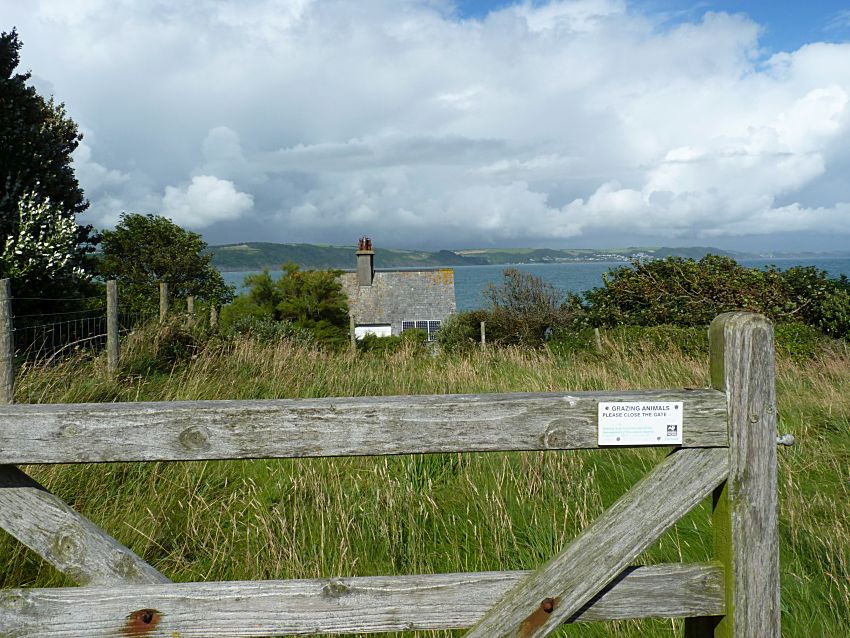
Grazing animals are requested to please close the gate!
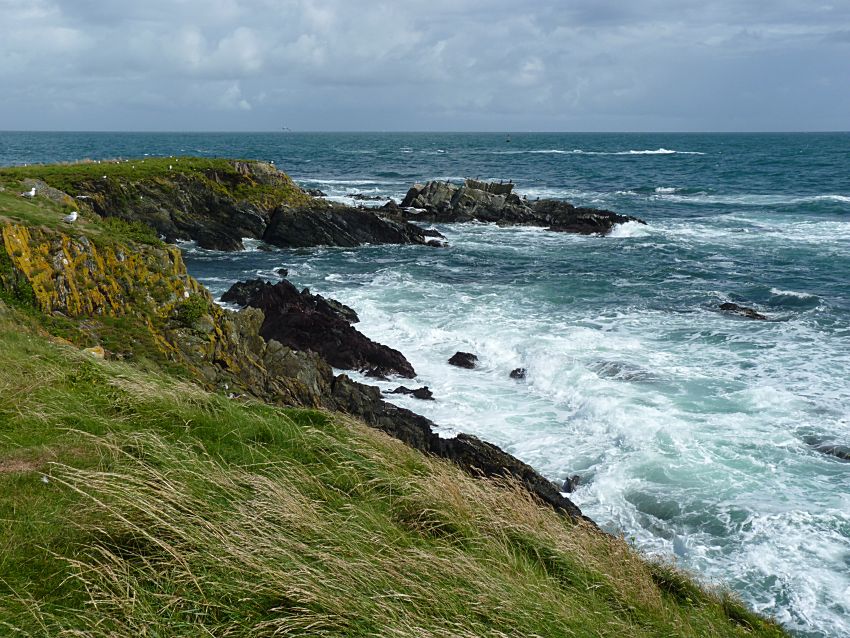
The south coast near the end of the island, and Trelawney's Island -
less sheltered here!
This coast is perfect for bird-watching, and
a bird hide overlooks the rocky cliffs.
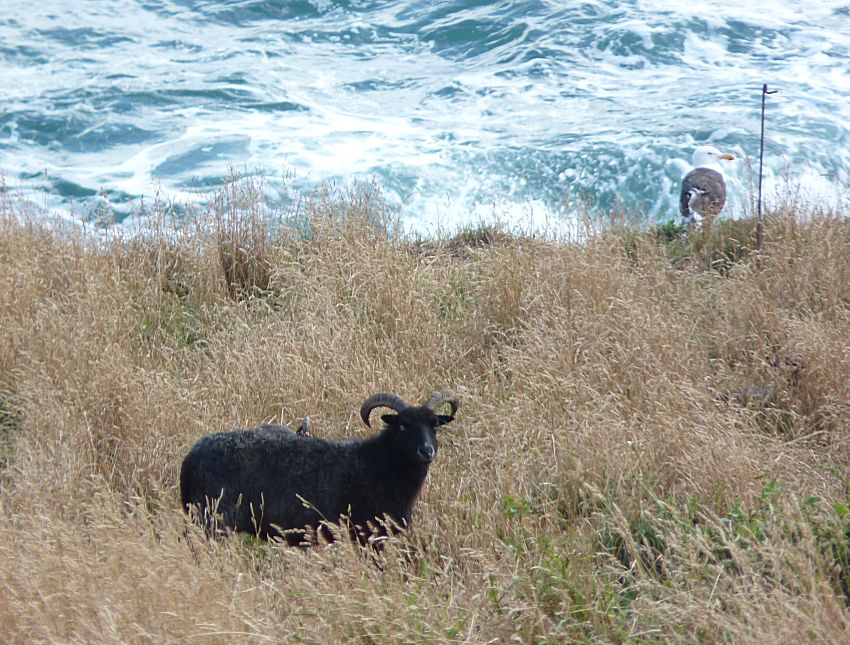
One of the island goats grazing freely
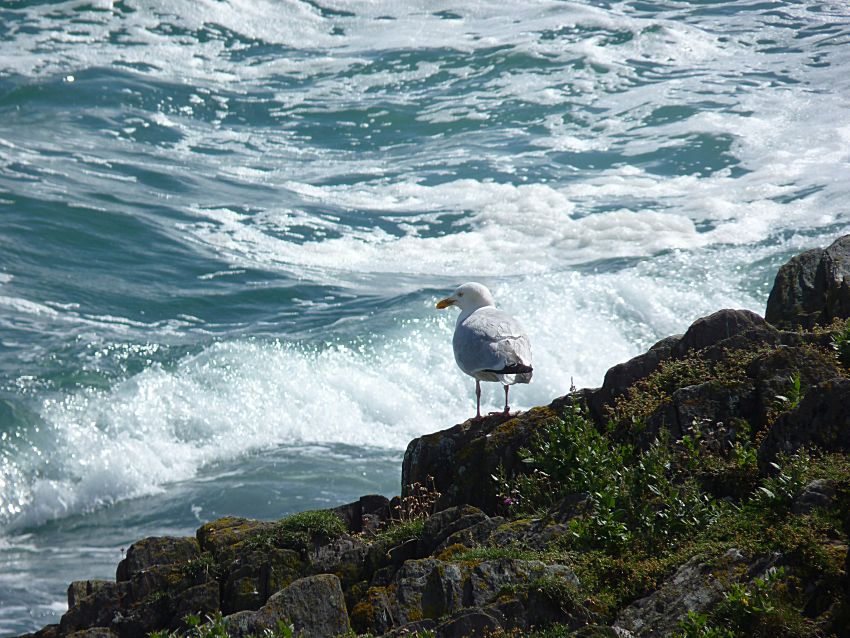
Jonathan Livingston also dropped in for a look!
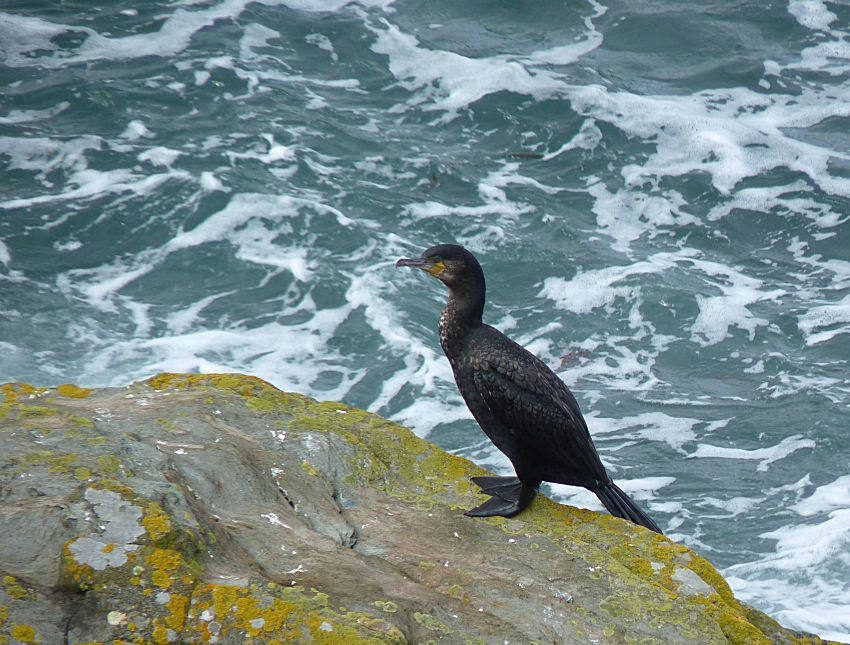
Cormorant on watch
The Island Trail
The walk around the island takes you all the way round, and up over the summit, where the ruins of the old chapel can be seen - there is not a lot visible now, but the archaeology is significant, and thid has been the subject of a Time Team investigation. This episode can be seen on the Looe Island page, called "Hermit Harbour".
When not a haven for smuggling, the island has also been previously cultivated over its nine hectares (22 acres). For now, it has found peace and reverted to a wildlife haven, and a beautiful place to explore away from the busy mainland. Living here, as was the case for the Atkins sisters, the island would take you a world away from everyday life, yet only a short boat ride across the water. In the winter and inclement weather, it has been possible to be cut-off by days or weeks at a time, with no mains services available other than those generated or managed on the island, and no supplies other than those already brought here. That is when living on an island becomes real.
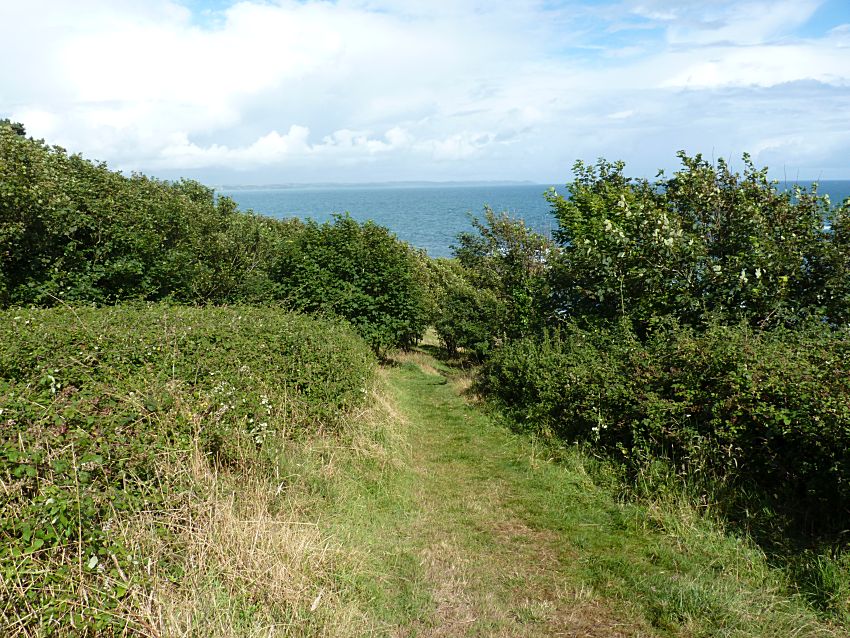
The Island Trail around the south of the island
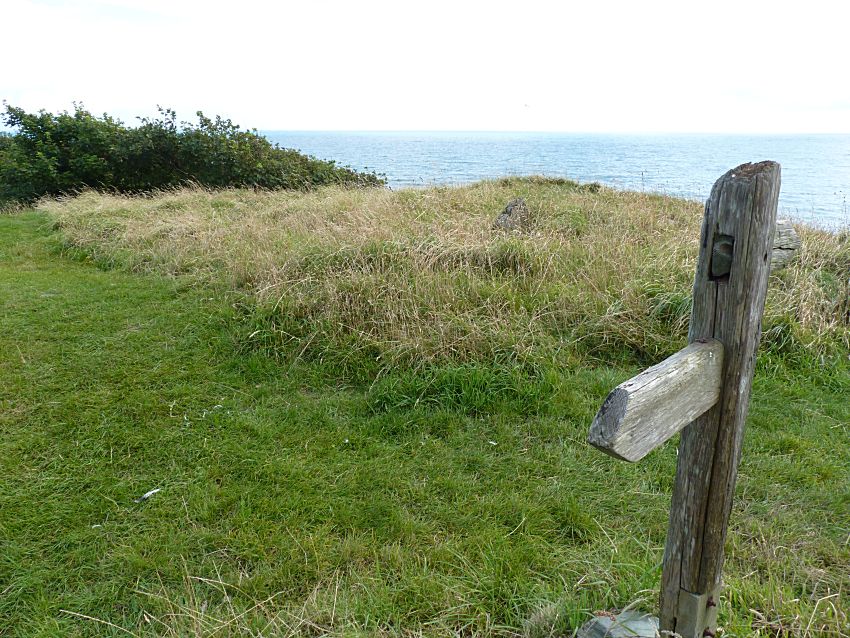
The island summit, an old nature reserve signpost, and the site of
the old Chapel
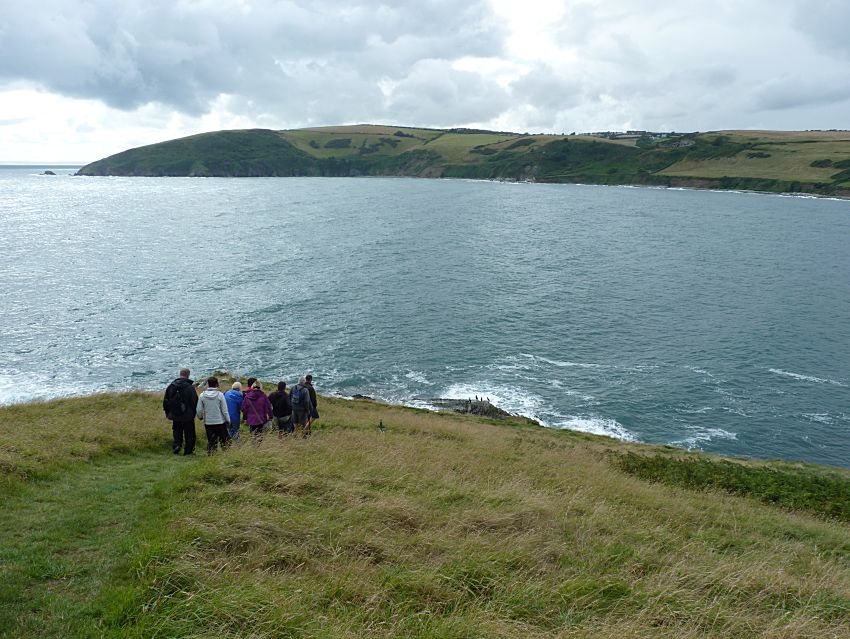
Back around to the north side near Dunker Point
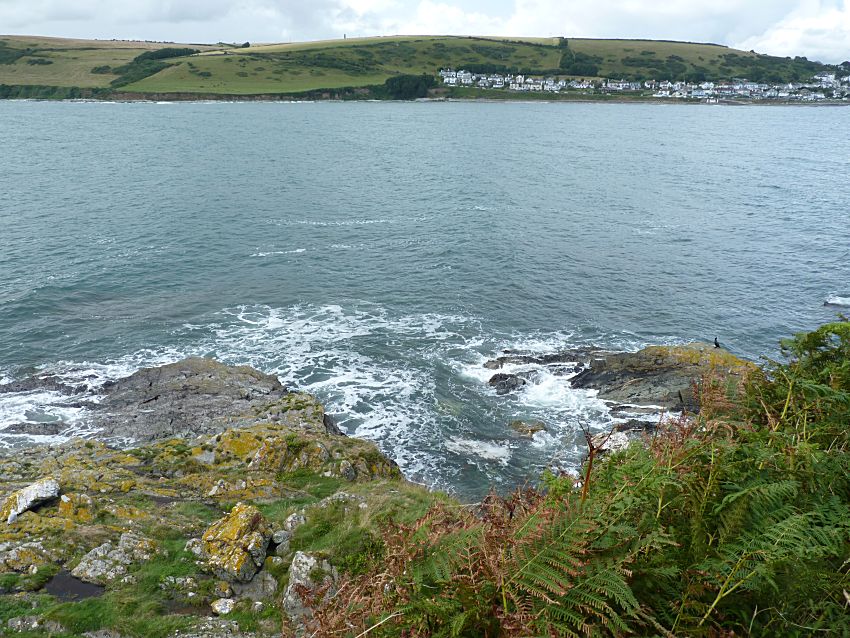
...and the feeling that you really are on an island, looking back
over the water to West Looe
The Return
The return to Looe was from the jetty below Jetty Cottage, as the tide was now high, and the beach less accessible. It is possible, and some people have done so, to walk - or at leasst wade out - to Looe Island on exceptionally low spring tides, and calm weather, from the Hannafore shore of West Looe, out beyond the rock pools visible as the tide goes out. However, in all other cases as now, a boat is required, and return was back the way we came.
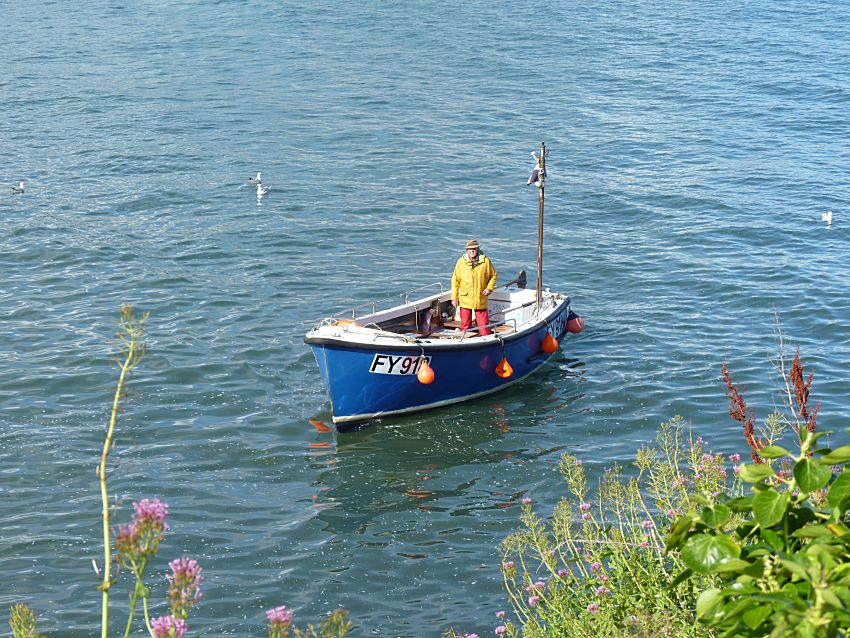
The boat returns...
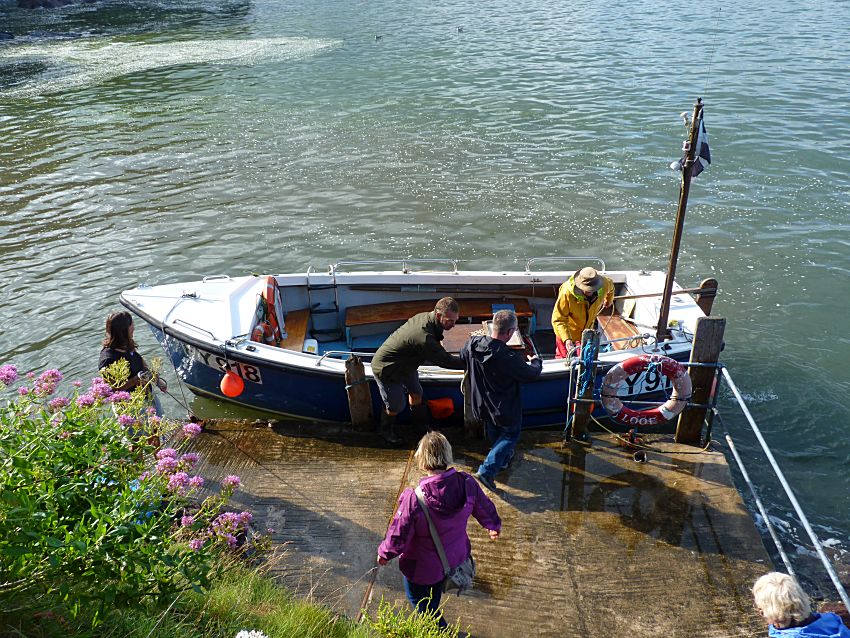
...to pick us all up at the jetty, now that the tide is higher
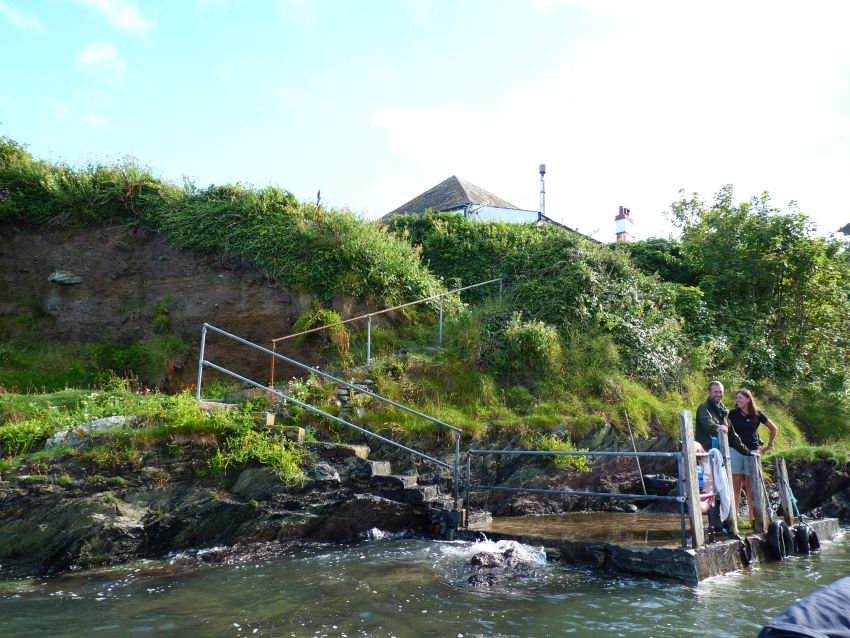
Our guides and wardens on the island, Claire Lewis and Jon Ross
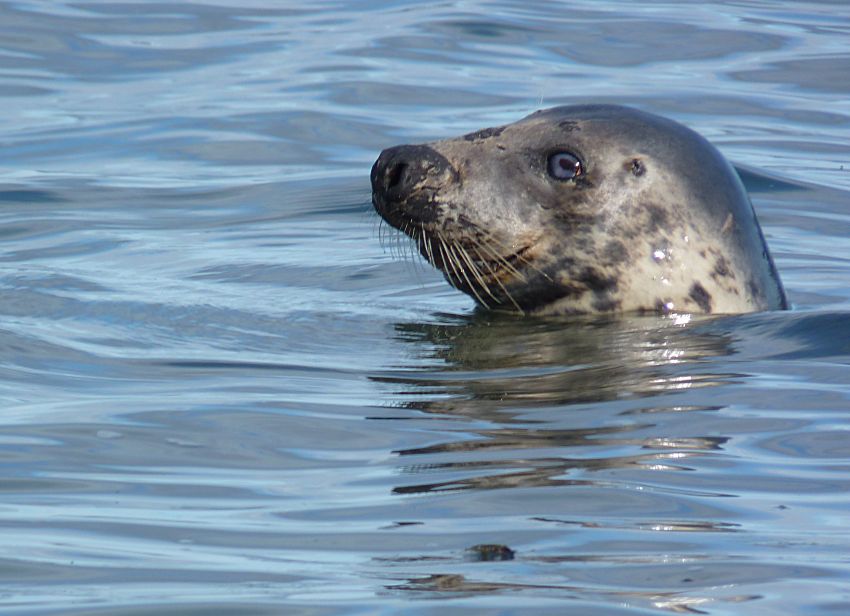
With a local Grey Seal keeping a beady eye on us!
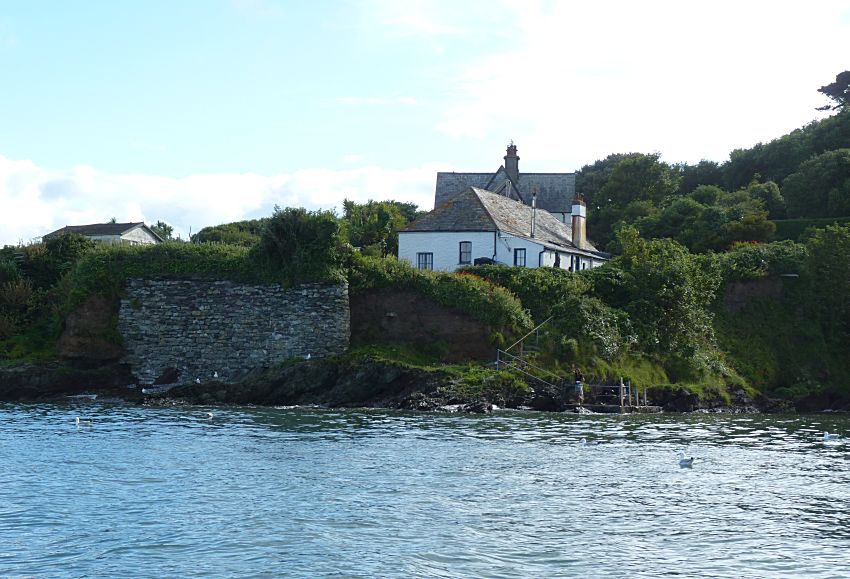
Goodbye to the Island
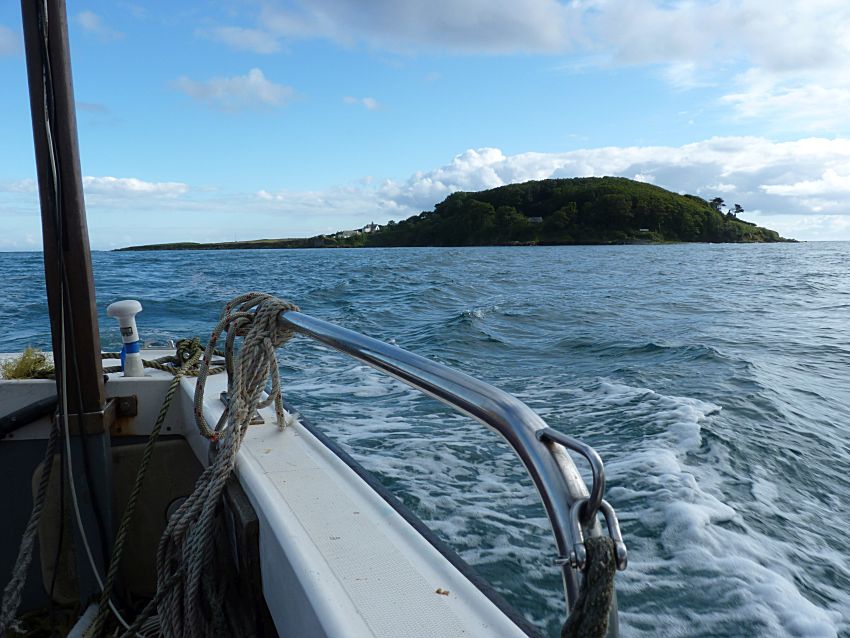
Paradise Lost
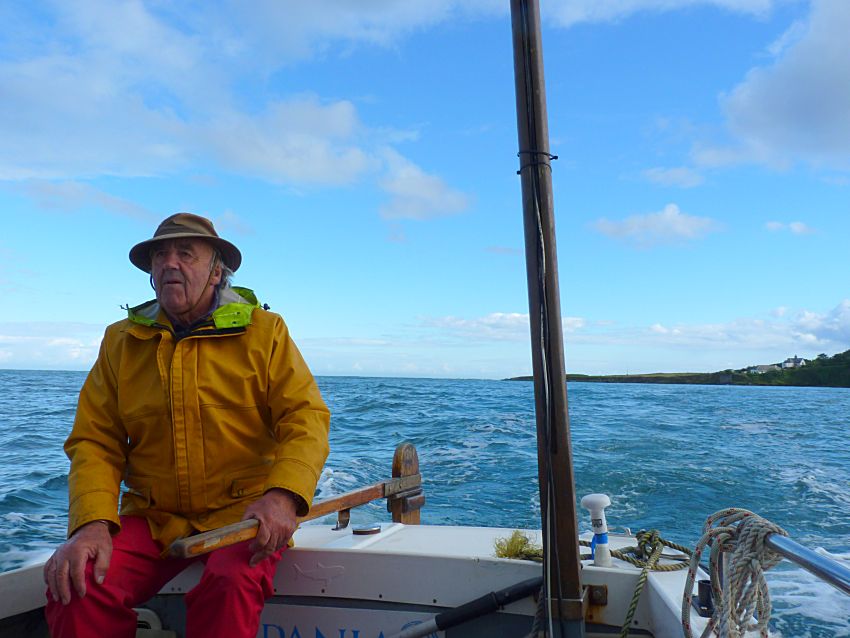
Our trusty and helpful Boatman for the day!
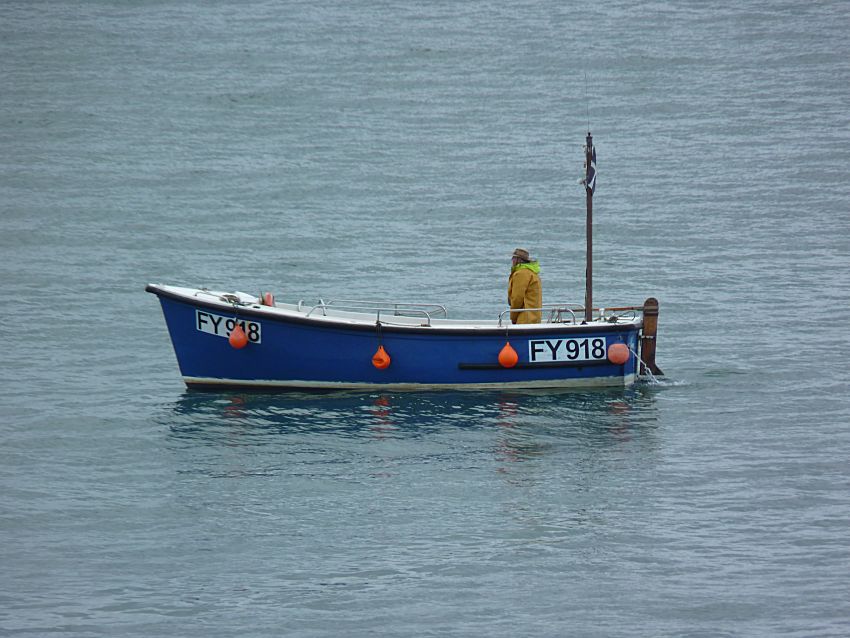
...and our ferry to the island.
For more information about trips to Looe Island, see the Cornwall Wildlife Trust's Looe Island pages
Return to the Looe Island page.
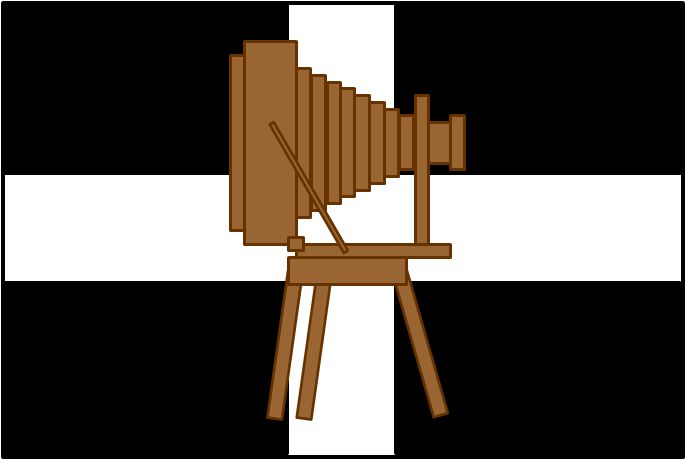

Connect with us, Like us and Follow us on Facebook!
PhotoFile Cornwall supports CoaST and Sustainable Tourism